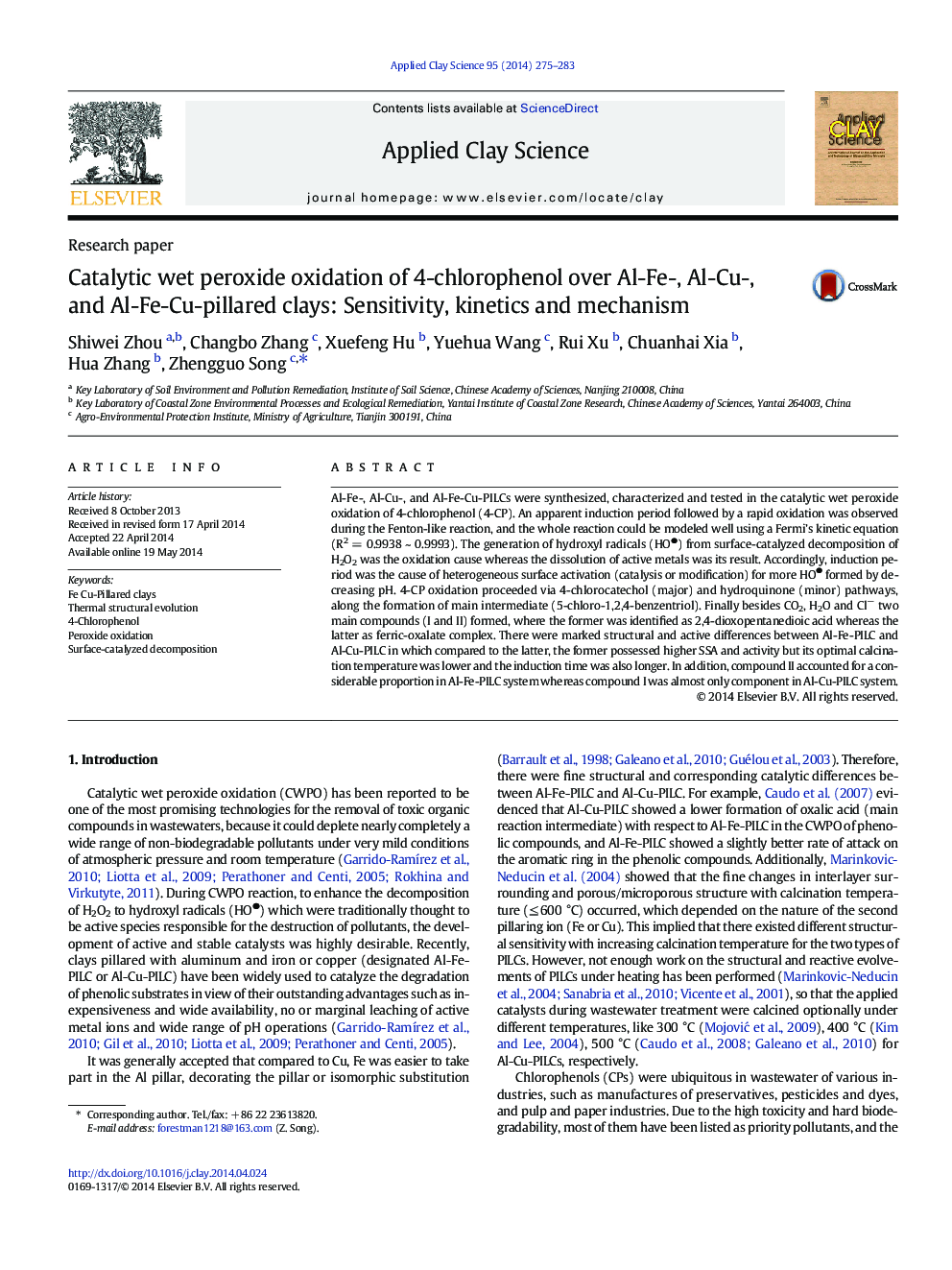| کد مقاله | کد نشریه | سال انتشار | مقاله انگلیسی | نسخه تمام متن |
|---|---|---|---|---|
| 1694819 | 1519082 | 2014 | 9 صفحه PDF | دانلود رایگان |

• Mixed Fe, Cu, Al-pillared clays (Fe, Cu, Al-PILCs) were prepared.
• Catalytic wet peroxide oxidation of 4-chlorophenol was studied.
• Activity of Fe, Cu, Al-PILCs depended on calcination temperature.
• Remarkable catalytic difference was observed between Al-Fe- and Al-Cu-PILCs.
• Induction period was attributed to activation process of catalyst surfaces.
Al-Fe-, Al-Cu-, and Al-Fe-Cu-PILCs were synthesized, characterized and tested in the catalytic wet peroxide oxidation of 4-chlorophenol (4-CP). An apparent induction period followed by a rapid oxidation was observed during the Fenton-like reaction, and the whole reaction could be modeled well using a Fermi’s kinetic equation (R2 = 0.9938 ~ 0.9993). The generation of hydroxyl radicals (HO●) from surface-catalyzed decomposition of H2O2 was the oxidation cause whereas the dissolution of active metals was its result. Accordingly, induction period was the cause of heterogeneous surface activation (catalysis or modification) for more HO● formed by decreasing pH. 4-CP oxidation proceeded via 4-chlorocatechol (major) and hydroquinone (minor) pathways, along the formation of main intermediate (5-chloro-1,2,4-benzentriol). Finally besides CO2, H2O and Cl− two main compounds (I and II) formed, where the former was identified as 2,4-dioxopentanedioic acid whereas the latter as ferric-oxalate complex. There were marked structural and active differences between Al-Fe-PILC and Al-Cu-PILC in which compared to the latter, the former possessed higher SSA and activity but its optimal calcination temperature was lower and the induction time was also longer. In addition, compound II accounted for a considerable proportion in Al-Fe-PILC system whereas compound I was almost only component in Al-Cu-PILC system.
Figure optionsDownload as PowerPoint slide
Journal: Applied Clay Science - Volume 95, June 2014, Pages 275–283